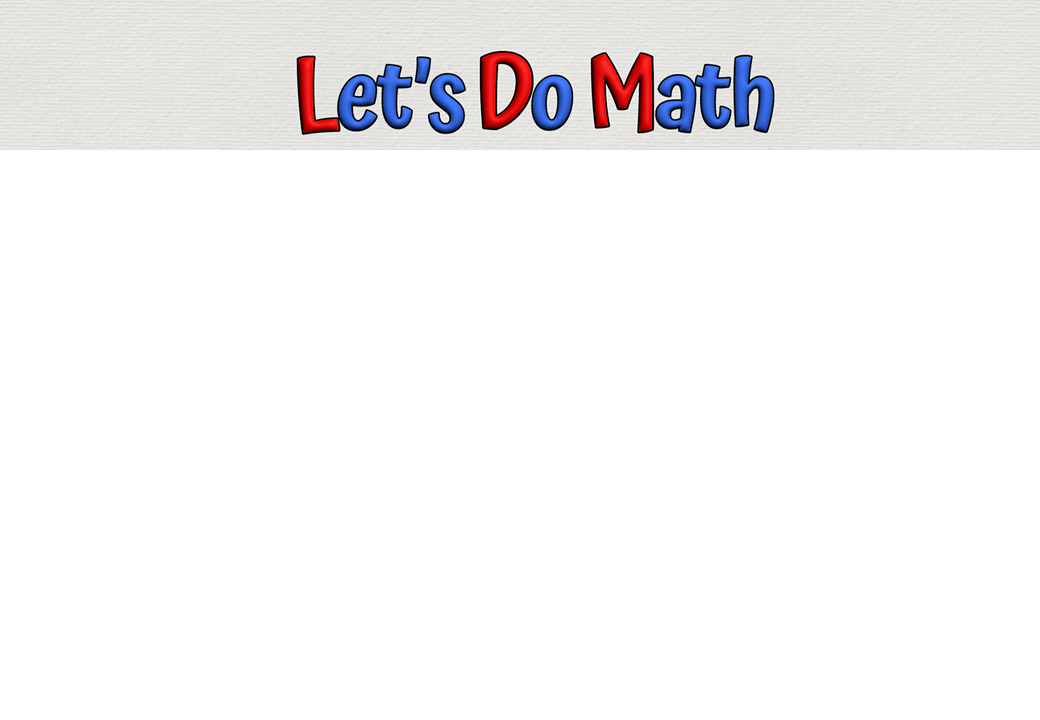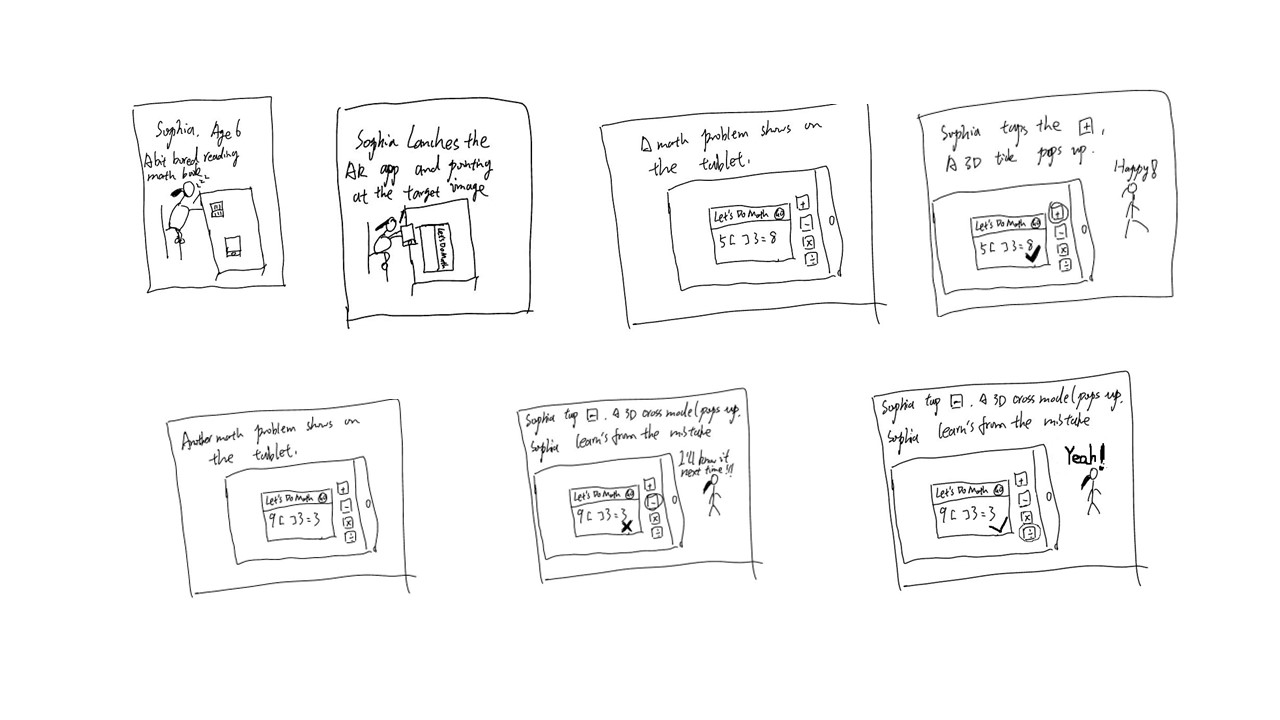KIT724 assignment 2
A downloadable game
1. Introduction
Screen recording capture of the application
Target image

This AR program supports young students to understand fundamental math concepts through a visual and participatory experience. The main scene is a simple arithmetic problem with four operation buttons and a ‘Go’ button on the targeted image.
2. Description of the Application
What the Application Does
The technology within the program mixes Augmented Reality (AR), parts of the interface, and dynamic 3D rendering. The software employs the camera to point certain target image and triggers an AR surroundings containing basic math problems and interactive features. On the experience side, this program presents young learners with a tangible, engaging experience, distinguish from more conventional instructive approaches like using paper materials. Users aren't just addressing math problems while using the app yet additionally getting included in an immersive learning environment. The math problems become magical floating features asking for interaction, and operations are not just symbols, but also available choices that lead to consequences and feedback, bringing both intellectual and emotional engagement to users.
Significance of the application in arithmetic teaching
The primary users of this application are early childhood learners, they are full of curiosity and desire for tactile and visual engagement with immediate feedback. Traditional methods of teaching math to early childhood users often rely on reading from textbooks, listening to instructions, and getting solutions (Ardeleanu 2019). This passive approach potentially leads to negative feedback such as children losing interest in math. Furthermore, the lack of immediate feedback in traditional settings may also influence the learning process. Children are more comfortable engaging with interactive digital environments than with passive learning methods. By turning math problems into interactive AR experiences, the application is not only helping young learners to learn math but also providing them with brand-new math learning experiences.
Significance of AR Interface Technology in the context of the application
AR technique provides users with a rich interaction experience with digital elements displayed in the real world, and children always learn from tactile experiences more effectively. AR interface technique is able to transform their environment into a learning playground and provides a tangible learning experience with solving math problems, seeing a 3D tick mark pop up in their space could bring much more joy than a simple check on paper.
3. Interaction Design
Why the Interaction(s) Are Needed in the Application
Interactions bring connections between the user and the digital environment. In this AR math application, interactions are not just functional commands, they are opportunities for young learners to engage, explore, and express. Without these active engagements, the application would be just another passive digital tool. The following highlights the reasons for the integrations:
- Immediate Feedback: Interactions, like selecting the correct mathematical operation, grant users immediate feedback, reinforcing learning and retaining interest.
- Engaging experience: Active engagement increases the user's involvement, making the learning process more memorable.
- Problem-solving Reinforcement: By interacting with math problems and receiving visual feedback, users practice critical problem-solving skills in real time.
- Personalized Learning Pace: Interactions allow users to progress at their own pace, ensuring comprehension before moving to the next problem.
Storyboard

Scene 1: A 6 years old young girl Sophia sits at her desk with her tablet. She's a bit bored with her regular math workbook.
Scene 2: Sophia launches our AR math app. She points the tablet's camera at a target image on her desk.
Scene 3: A virtual interface shows on her screen, overlaying the real world. A math problem appears: '5 [ ] 3 = 8'. Animated '+', '-', ‘בand ‘÷’ buttons float aside the problem.
Scene 4: Sophia taps the '+' button, and a 3D tick mark pops up, celebrating her correct choice. Sophia is happy.
Scene 5: Sophia taps ‘Go’ button to get another problem, '9 [ ] 3 = 3 appears..
Scene 6: Sophia chose ‘-’, A 3D cross model appears, indicating the incorrect choice. But, instead of feeling defeated, Sophia determines to find the right answer, learning from her mistake.
Scene 7: Sophia chose ‘÷’, and a 3D tick mark pops up. She keeps doing the math problems, receiving immediate feedback, enjoying the interactions, and extending her understanding of math.
4. Technical Development
This AR application is developed by Unity software with Vuforia engine, it uses a webcam to target a specific image to trigger the application, and it is built with World-space Canvas buttons for the operation buttons and the ‘Go’ button for interactions since the virtual buttons are barely responsive. The procedure for using this app is shown as follows:
- Activate the webcam and point it to the target image.
- After a short time of recognition for the target image, a math problem shows up on the screen.
- User decides and selects the appropriate operation.
- User receives immediate feedback with a 3D model of tick (if they chose the right operation) or cross (if they chose the wrong operation).
- User hits the 'Go' button to get another math problem.
For coding wise, functions of math problem generation and checking users' answers are essential. There are a few things that need to be considered:
- The app aims to generate simple math problems, so the number ranger should be set from 0 to 10.
- For the division problems, questions of results with remainders should be avoided.
- For the division problems, 0 can't be the denominator.
- Sometimes there might be more than one correct answer for the question, for example, '3 [ ] 1 = 3 ', the answer could be either ‘בand ‘÷’.
These considerations are added while coding with ChatGPT.
5. Descriptions of 3D Models
3D Model: Tick
Thumbnail: 
Description: An Opaque red tick.
Purpose: To indicate users if they have chosen the right operation for the math problem.
3D Model: Cross
Thumbnail: 
Description: An Opaque blue cross.
Purpose: To indicate to users if they have chosen the wrong operation for the math problem.
3D Models: Go, +, -, ×, ÷
Thumbnail:




Description: Canvas buttons: Go, +, -, ×, ÷
Purpose: Interactive button to achieve the functions of application.
Reference:
Ardeleanu Roxana, TRADITIONAL AND MODERN TEACHING METHODS IN MATHEMATICS, https://www.proquest.com/openview/2998ca4178b5c9ea6eff77c7a9141518/1?pq-origsite=gscholar&cbl=2055403
ChatGPT for coding purpose: https://chat.openai.com/share/9ce96aa1-9c19-4a85-b4c6-7d69035a3b6c
'Go' image: https://www.google.com/url?sa=i&url=https%3A%2F%2Fblog.inkyfool.com%2F2013%2F03%...
'Let's do Math' image: https://www.google.com/url?sa=i&url=https%3A%2F%2Fwww.letsdomath.ca%2F&psig=AOvV...
'Operation' images: https://www.google.com/url?sa=i&url=https%3A%2F%2Fwww.alamy.com%2Fsigns-of-basic...
'Tick' and 'Cross' 3D models: https://cults3d.com/en/3d-model/game/tick-cross
| Status | Released |
| Author | DW1013 |
| Genre | Educational |
Leave a comment
Log in with itch.io to leave a comment.